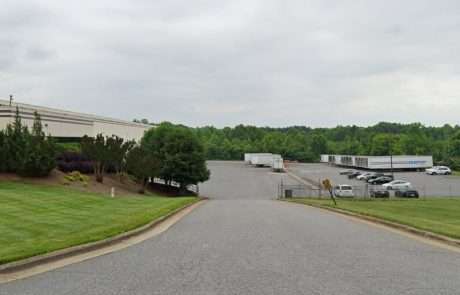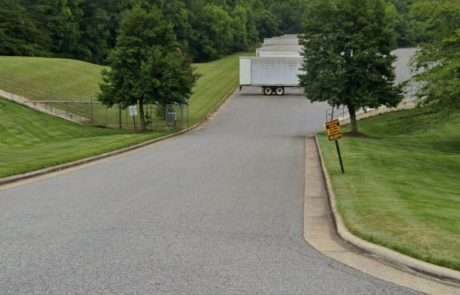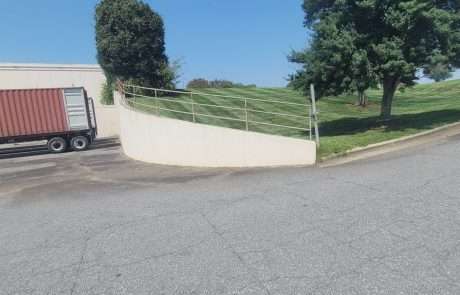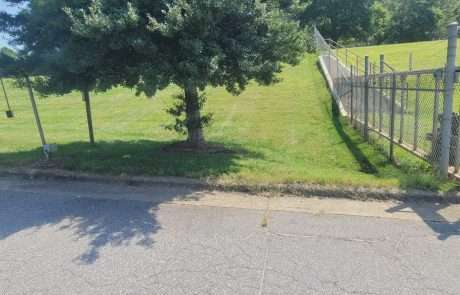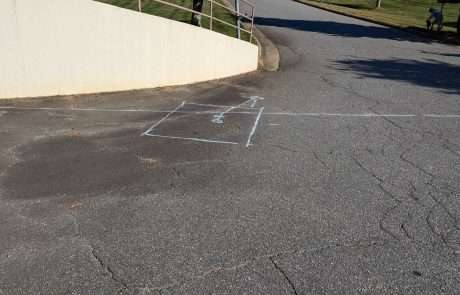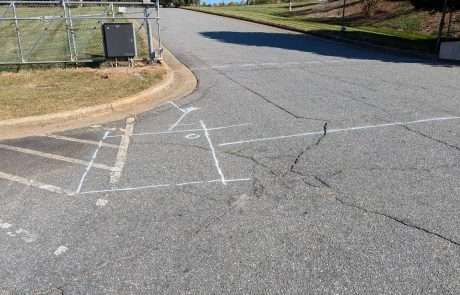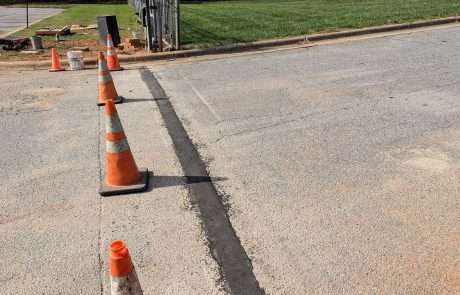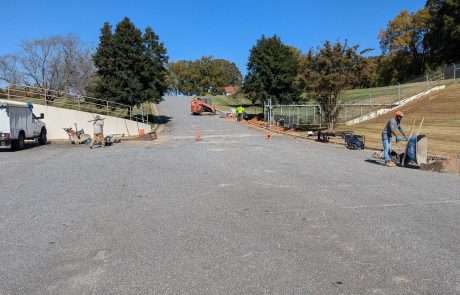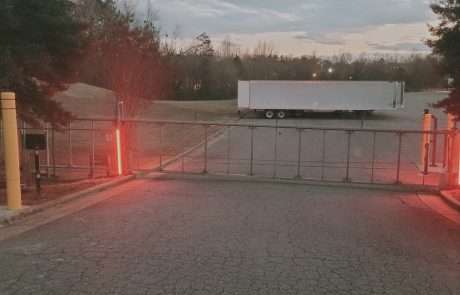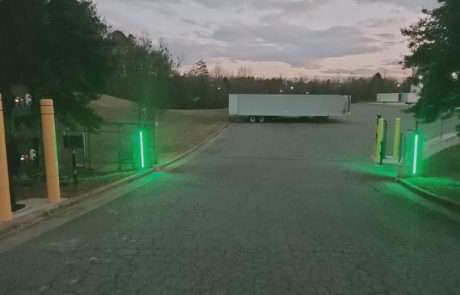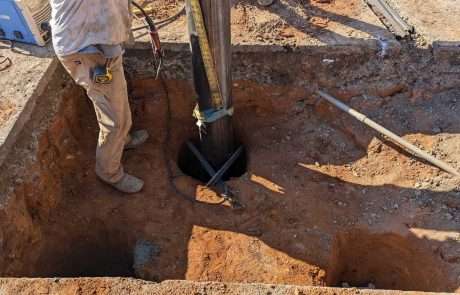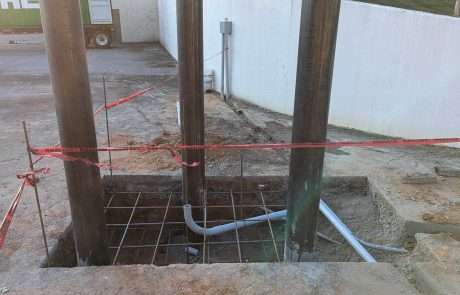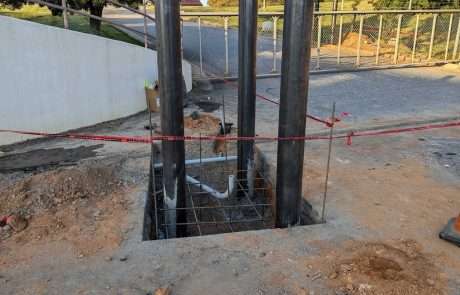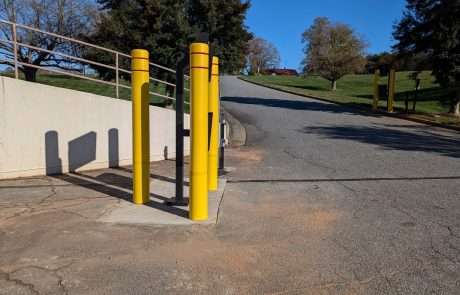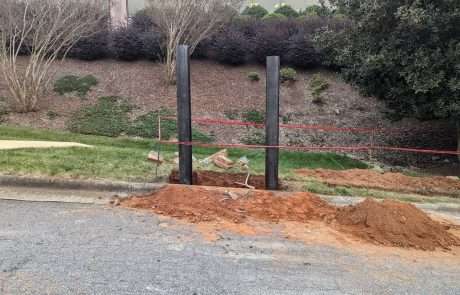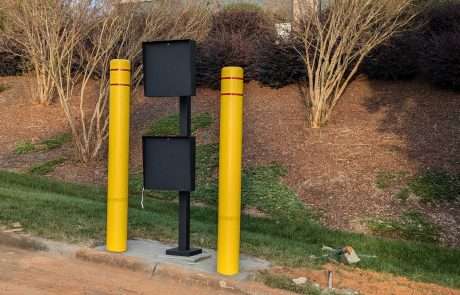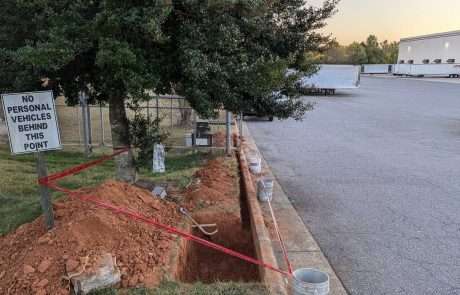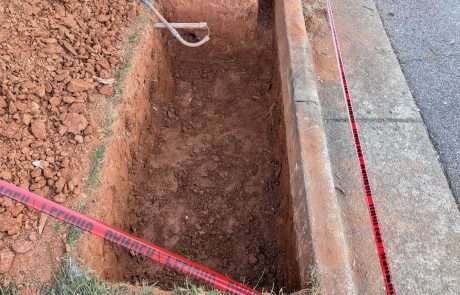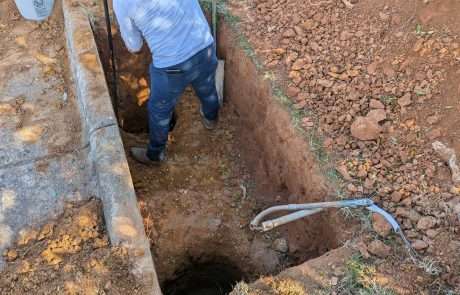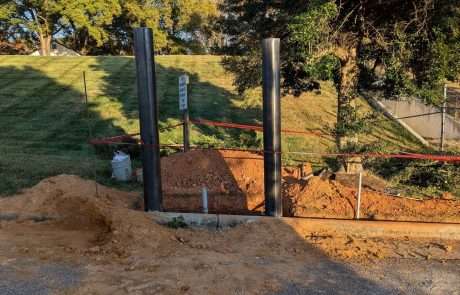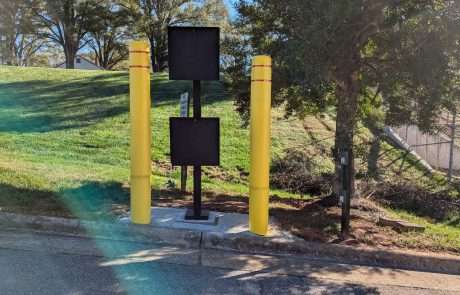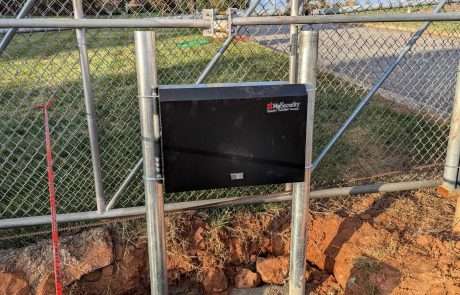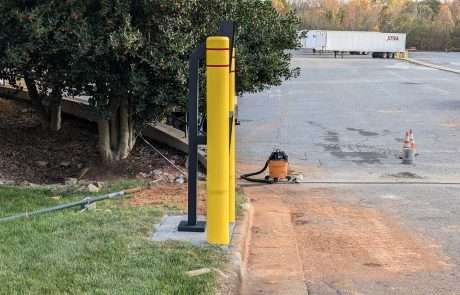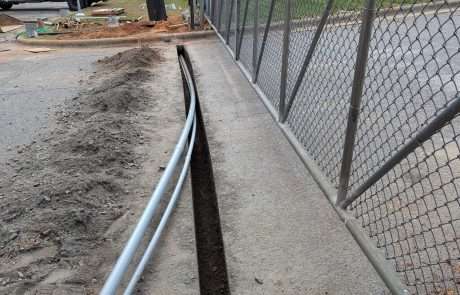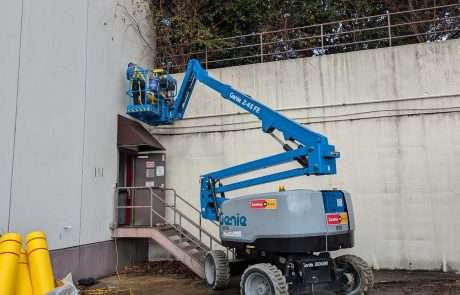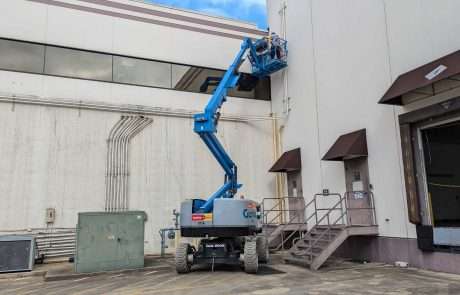78 FENCE CASE STUDIES
Industrial Gate Automation & Safety Enhancement for Furniture Distribution Facility
Client Profile
A large furniture distribution center in the Northeast U.S., handling high-volume truck traffic for loading and unloading goods from shipping containers.
The Challenge
Non-Operational, Unsafe Entry/Exit System
Before the project began, the facility faced critical logistical and safety challenges:
- Two 30–32 ft gates (entry and exit) were both malfunctioning.
- Trucks entered and exited through the same gate, leading to traffic inefficiencies and safety concerns.
- The gate operators were outdated and non-functional.
- There was no system in place to regulate or signal safe passage for trucks.
- No protective bollards or communication systems to prevent gate equipment damage or ensure secure operation.
- Gate areas lacked pedestrian-friendly and driver-appropriate interfaces for check-in and check-out procedures.
These shortcomings disrupted daily operations and posed a significant risk of equipment damage and safety incidents, especially with large 18-wheelers regularly entering the premises.
The Transformation Process: Structured, Secure, and Smart Access
Our team delivered a comprehensive solution focused on operational efficiency, vehicle safety, and equipment protection. The scope of work included:
Step 1: Assessment and Planning
- Conducted a detailed inspection of both gate systems.
- Analyzed traffic flow patterns to determine the best placement for safety and communication equipment.
Step 2: Gate Operator Upgrade
- Installed new, commercial-grade gate operators on both entry and exit points.
- Integrated a smart lighting system:
- Solid Red Light: Indicates the gate is closed.
- Flashing Red: Signals gate is in motion—drivers must wait.
- Solid Green: Indicates it is safe to proceed—gate is fully open.
- These visual cues now provide clear driver feedback, reducing gate collisions and confusion.
Step 3: High-Security Bollard Installation
- Constructed deep-set, reinforced bollards using crash-barrier principles:
- 2-foot deep piers, 18 inches in diameter.
- Steel-reinforced concrete pad (2 feet thick) connects all bollards as one immovable unit.
- Bollards are filled with concrete and covered in polyethylene jackets—no painting required, long-lasting high-visibility yellow finish.
- Designed to withstand heavy impacts, these bollards protect critical infrastructure such as gate operators, cameras, and card readers.
Step 4: Communication Pedestal System
- Installed dual-height access pedestals to accommodate both:
- Passenger vehicles
- Tall commercial trucks
- Each pedestal includes:
- Camera systems
- Card readers
- Intercoms for remote check-in/check-out
Step 5: Underground Conduit & Integration
- Ran low-voltage and high-voltage conduits from gates to the main building.
- Utilized lift equipment to install infrastructure within the building’s control systems.
- While the client managed wire installation, we ensured all electrical and data infrastructure was properly integrated and future-ready.
The Result: A Safer, Smarter, and Stronger Entry System
The results of the transformation are immediately visible and operationally impactful:
- Streamlined Traffic Flow: Separate lanes and automated signals reduce confusion and congestion for truck drivers.
- Improved Safety: Bollards protect both infrastructure and personnel; lighting system prevents accidental gate impact.
- Durability and Low Maintenance: Polyethylene bollard covers and deep concrete reinforcement minimize upkeep and extend the system’s life.
- Enhanced User Experience: Dual-height pedestals ensure ease of access for all vehicle types, improving driver satisfaction and operational efficiency.
- Future-Proof Infrastructure: Robust conduits and pedestal systems allow for future tech upgrades or system expansions.
This transformation turned a high-risk, outdated entry system into a safe, intelligent, and reliable access point for the client’s busy logistics hub. Through thoughtful engineering, innovative problem-solving, and careful attention to traffic and safety needs, the project delivered long-term value and peace of mind for the client’s operations team.
Expert Insight: Crash Barrier Technology Applied
A standout feature of this project was the application of crash-barrier engineering techniques to bollard installation—bringing high-security principles into a commercial environment. This knowledge ensured that the safety systems not only looked secure but were engineered to withstand real-world impacts from even the heaviest vehicles.

